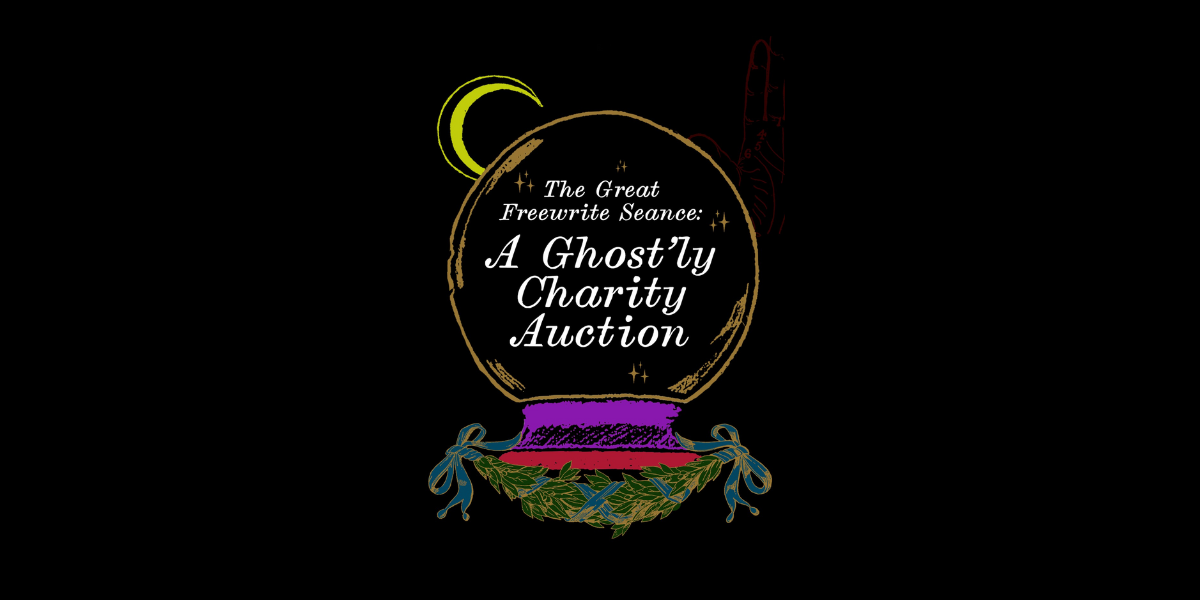Mastering your craft as a writer - especially as a fiction writer - can take years. That’s the bad news. The good news is that you can be proactive in getting to grips with the skills and techniques you need to take your writing from mediocre to masterful. One of the most foundational skills you need to comprehend is that of creating tension (or suspense) in your stories.
Why Suspense Matters
Suspense is an essential ingredient in fiction. It’s what keeps your readers turning the page long after they’ve declared that they’ll ‘read just one more page before I put the light out’. Without tension and suspense, your story is flat and lifeless.
When I first started out as a self-proclaimed fiction writer, I didn’t understand suspense at all. I thought that suspense fiction was a genre all of its own, and so I didn’t realize how important it was to my stories.
Suspense matters. You can’t write a great story without it. Unfortunately, writing scenes full of suspense and tension can be tricky. You have to learn about the right balance (otherwise known as pacing) and understand the different techniques you can use to create tension.
Authors who rely too much on just one or two tension-building techniques suffer from the unfortunate problem of creating ‘predictable tension’. You might get away with that in one book, but if you build a following of fans, you’ll soon find that they get wise to your predictable tension techniques, so your writing loses much of its suspense.
You want to keep your readers gripped, which means you need a whole arsenal of tension techniques that you can mix up in your writing to avoid the death-knell of predictability. I’m going to teach you three essential suspense skills you need to write unputdownable fiction.
#1. Create Crucial Conflict
Conflict is one of the key ingredients of suspenseful writing. Conflict automatically creates tension in scenes, so naturally, it’s an author’s best friend. What makes conflict even more important is its versatility. There are different types of conflict too. For example:
- Character versus nature (e.g. when a character faces some kind of natural disaster)
- Character versus self (e.g. a character who has some kind of internal struggle to deal with)
- Character versus society (e.g. characters pitted against an oppressive government regime, or a character that’s part of a minority group who struggles with marginalization)
- Character versus character - relational type (e.g. unrequited love or some kind of drama within a family)
- Character versus character - hero/villain type (e.g. the traditional good-guy versus bad-guy situation)
- Character versus technology (e.g. science fiction scenarios where technology is the antagonist)
- Character versus the supernatural (e.g. scenarios where characters are faced with battles against prophecies about their own fate)
As you can see from this list of conflict types, conflict in fiction is always rooted in characters - the conflict is between the character and something else. If you try to create conflict by any other means, your story will fall flat, unfortunately.
At its heart, conflict is about something keeping your character(s) from their goals. That means that you need to know - and make clear to your readers - what your characters’ goals are. Without this fundamental first step, you can’t create the tension you need to create a gripping story.
Spend some time brainstorming your character’s goals and the types of conflict that might keep them from achieving those goals. Pick two or three scenarios out of your brainstorming session and write a scene for each where your character is pitted against the literal or figurative nemesis to their goal.
Creating conflict is a skill you need to practice until it becomes an automatic part of writing. Don’t just practice when you’re writing your novel, either. Honing your craft as a writer means spending time developing your skills before you sit down to write your masterpiece. Here’s some prompts you might want to try:
- Davy is about to leave the house and embark on a trip when an unexpected guest arrives…
- Allison has planned the speech she’s going to make to break up with Drew, but then, just as she’s about to open her mouth, Drew gets down on one knee and proposes…
- Craig has just accepted a place at CalTec when a news story breaks that threatens his entire future…
- Becca is hiking in the mountains alone, trying to come to terms with something that’s happened, when a fierce storm unexpectedly hits.
#2. Raise the Stakes
You know your characters, you know their goals - but your goal as a writer is to keep your characters from achieving their goals (at least until you’re ready for the climax of your story). One thing that startled me when I started writing full time was how much I came to sympathize with my protagonists, so much so that I felt bad for pitting them against so many obstacles to keep them from their goals.
You can’t afford to let sentimentality get in the way of your tension-creating skills. I learned that the hard way. One of the most effective ways of creating tension in your writing is to keep raising the stakes. This means that the more your characters fight against the things opposing their goals, the further away they seem from achieving their goals.
There’s a range of ways you can raise the stakes in your novel - but before you get to writing your story for real, try practicing these different stake-raising techniques:
The Ticking Clock
Nothing raises the stakes more than a time limit. In practice, that means that you give your character a goal that has to be achieved in a certain time frame. The reason why the limit is there is up to you.
When you use this technique, every time your character makes a failed attempt to overcome the obstacle in their way, the more aware the reader becomes of how little time is left. It keeps your readers gripped.
The Fun-House Floor
If you’ve never been in a fun-house, this won’t mean anything to you, so I’ll explain. In a fun-house there is often a section made up of platforms that move up and down and side to side, making it really difficult to cross to the other side.
In fiction, the fun-house floor technique introduces change and uncertainty for your character, unbalancing them and making them (and your reader) wonder how to move forward. There’s plenty of things you can introduce to create uncertainty - the death of a loved one, the revelation of a secret, the loss of a job.
The Shock Revelation
To use this technique effectively, you need to understand foreshadowing (you can check out my guide to using foreshadowing if you want to brush up on those skills). Making a shock revelation is a great way of raising the stakes - as long as you ensure that it’s a revelation that in some way keeps your character from their goals.
You can’t just dump a shock revelation into your story, however. It needs to be set up (using foreshadowing - but carefully) so that your readers get the ‘ah-ha’ moment. Chucking in a revelation that you haven’t hinted subtly at using foreshadowing isn’t going to make your readers happy. It can be a shock to your character, but your readers might already have their suspicions.
Practicing Raising the Stakes
Use these prompts to practice your stake-raising skills:
- Amelia’s nephew has gone missing while she was taking care of him, and his parents are due home in 36 hours…
- The deadline is in three days...
- Juan has just 24 hours to gather evidence to prove that his partner is innocent of the murder…
- Carrie receives an anonymous letter with the words “I know what you did” on it...
- Ethan’s secret is out…
- Michael’s uncle dies suddenly…
- Stefan has just paid the deposit on his condo when his boss fires him...
#3. Partner Tension With Pacing
When I realized that my fiction was missing tension, I kinda went to the extreme with it, and tried to throw tension into every scene, every conversation, every moment my characters took to think… It wasn’t pretty. It was the precise opposite of pretty.
When you’re working with tension and suspense, you need to have a balance. That’s where pacing comes in. Pacing gives your characters (and your readers) time to breathe between intense scenes filled with tension. You can’t have your character going from tension-filled-scene to tension-filled-scene without having some kind of ‘normality’ in-between. That’s not how real life works, and it doesn’t work in fiction, either.
Understanding pacing creates a more realistic flow to your fiction, which is why it’s important you learn to pace your writing in parallel with tension. There are two types of pacing - fast pacing and slow pacing. Let’s take a look at them and see how you can partner pacing with tension for fabulous fiction.
Fast Pacing
Essentially, fast pacing is where most of your tension lives. These scenes carry urgency and spend less time on unnecessary details. When you’re writing these kinds of scenes, you want your writing to be punchy to reflect the pace. This is not the place for long descriptions or explanations.
Fast pacing works by building tension to a crescendo. These are the scenes that will keep your reader urgently turning the pages to find out what happens.
Slow Pacing
To give your character a breather, slow pacing after a particularly tense scene works really well. Here’s where you can focus on the details, explore your character’s psyche and begin to build up towards the next tense scene.
Slow pacing can be filled with emotion or packed with emotive and atmospheric details. You can still add tension in these slower scenes, but you’ll do it differently.
In slow-paced scenes, you’re not using action to create tension, but rather focusing on building tension with atmospheric details. This works particularly well in thrillers or horror fiction, where things like the rustling of leaves or footsteps on the pavement can create suspense.
Some slow-paced scenes are pretty identical to ordinary, non-tension-filled scenes, so if you can write an ordinary scene, then you can write one of these. Writing slow-paced atmospheric scenes with undercurrents of more gentle tension, however, take a bit more practice. Here are some prompts you can try out:
- Describe the shadows in the room
- The light flickers…
- Phoenix is sitting in the basement. Describe the atmosphere…
- Sam is taking a walk to clear his head. He heads into the forest, his favorite place in the world. Describe the sounds, smells, sights. Then, there’s the crack of a twig…
Making Tension Come Naturally
You can’t write fiction without tension, so if writing is your passion, then you have to master the art of creating both fast-paced and slow-paced tension. For most people, this takes time and patience before you get it right - but once you do, you’ll find that it soon starts to come naturally, and you’ll find yourself putting just the right amount of tension into your scenes without having to consciously think about how you’re going to do it. The more you practice, the easier it becomes!





























